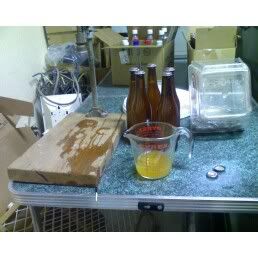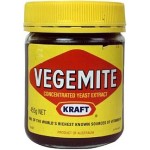How to brew beer in a coffee maker, using only materials commonly found on a modestly sized oceanographic research vessel.
Introduction
Beer brewing is as much an art as a science. Finding the right blend of delicate grains, hops, malt, adding just the right flavoring agents, boiling for exactly enough time to release the tannins, starches, humic acids from you wort, these are all skills that take a lifetime to master. Perfect beer is meticulously planned and carefully crafted.
Screw that.
You’re six days into a 2 month expedition, and if you were lucky enough to not be on a dry ship, it’s de facto dry by now anyway. You’re eying the ethanol stores, the crew is eying each other, and all hell will break loose if y’all don’t get some sweet water soon. This is no time for artistry.
This is not, as a rule, a terribly good beer (though, with a good brewmaster on board, it can be). This is a beer to pass the time. I can guarantee that if you are careful, it will be at least as good as the cheapest commercial alternative.
Materials
The tools you need are simple: an electric drip coffee maker with hot plate, a coffee filter, 2 1-liter sample jars, 2 handkerchiefs, 2 rubber bands, and a source of clean (preferably R/O) water.
You’ll have to be more creative with your ingredients. What you need are some sort of grain, some malt, and, if possible, something that can act as a clarifying and hopping agent. You need a simple grain to release the tannins, starches, and enzymes. The best bet is common cereals - Raisin Bran, Cracked Wheat, Kashi, whatever you can find. The fruit and nuts will add flavor, but are not important.
Malt is tricky, and sometimes gross. In my experience, the best you can hope for is vegemite, marmite, or some other yeast extract. If you have chocolate malt balls or some other malt based candy, those can be ground up and used as well.
The hops are the hardest, and you may have to forgo their goodness. Alfalfa or some other green roughage may work, but a clever biologist will bring their own hops on board.
Methods
Sanitation is key. If you have an autoclave, sterilize your tools ahead of time. Otherwise, wash everything with an iodine solution or, if there are no other options, ethanol. Contamination is your enemy. Everything must be clean.
1. Grind up your ‘grains’ (but not so much that it becomes powder).
2. Place your ‘grains’ in coffee pot (not the filter basket, the carafe).
3. Run 2 cups of clean water through coffee maker and let it sit on the hot plate for an hour. This releases all the good chemicals from you ‘grains’ and creates a fluid called wort.
4. Strain the wort through the coffee filter and place the filter full of ‘grain’ into the filter basket. Add the ‘malt’ to the filter basket. Pour the strained liquid back into coffee maker and add 1 cup of water.
5. Run the wort through the coffee maker 5 times, each time adding 1 cup of water.
6. Pour the wort into the saucepan and boil for 45 minutes. Two minutes before boiling is done, add the hops.
7. Carefully pour the wort into the canning jars.
8. Let the wert cool to between 60 and 70 F. Once it is cool enough to touch the outside of the jars without burning, pitched the Bakers’ Yeast into the mixture.
9. Seal jar with a handkerchief and rubber band over the mouth.
10. Store in a cool, dark place where it will not be disturbed for a week.
Results
A cool, smooth brew, flavored with whatever you found. It may be bad, it may vbe very good. It will be beer.
Conclusion
You are now the most popular person on the boat. Enjoy.
Please note - these methods can be adapted to any lab or field work that demands it. The modestly sized oceanographic research vessel is not mandatory.
Southern Fried Science in no way endorses the consumption or manufacture of alcoholic beverages on dry or alchohol free research vessels, nor do we condone the manufacture of beer by the underage. Drink responsibly or don’t drink at all.
~Southern Fried Scientist




